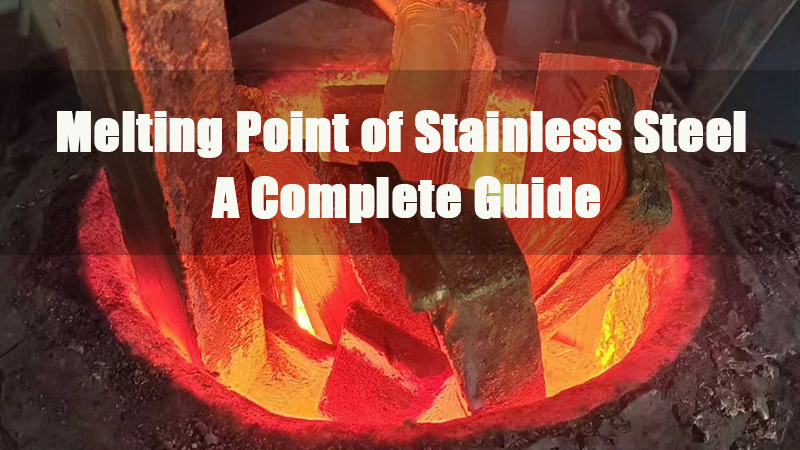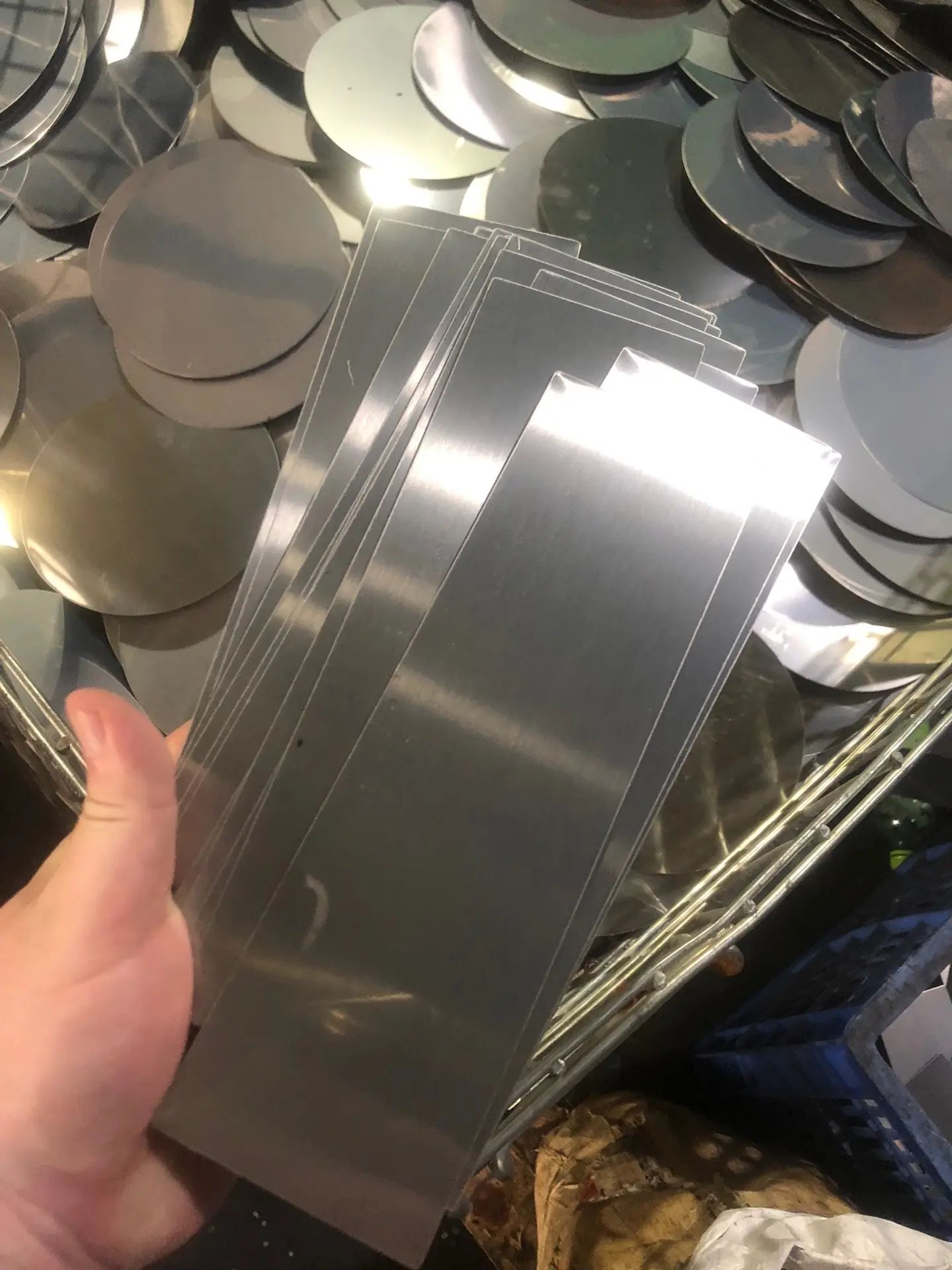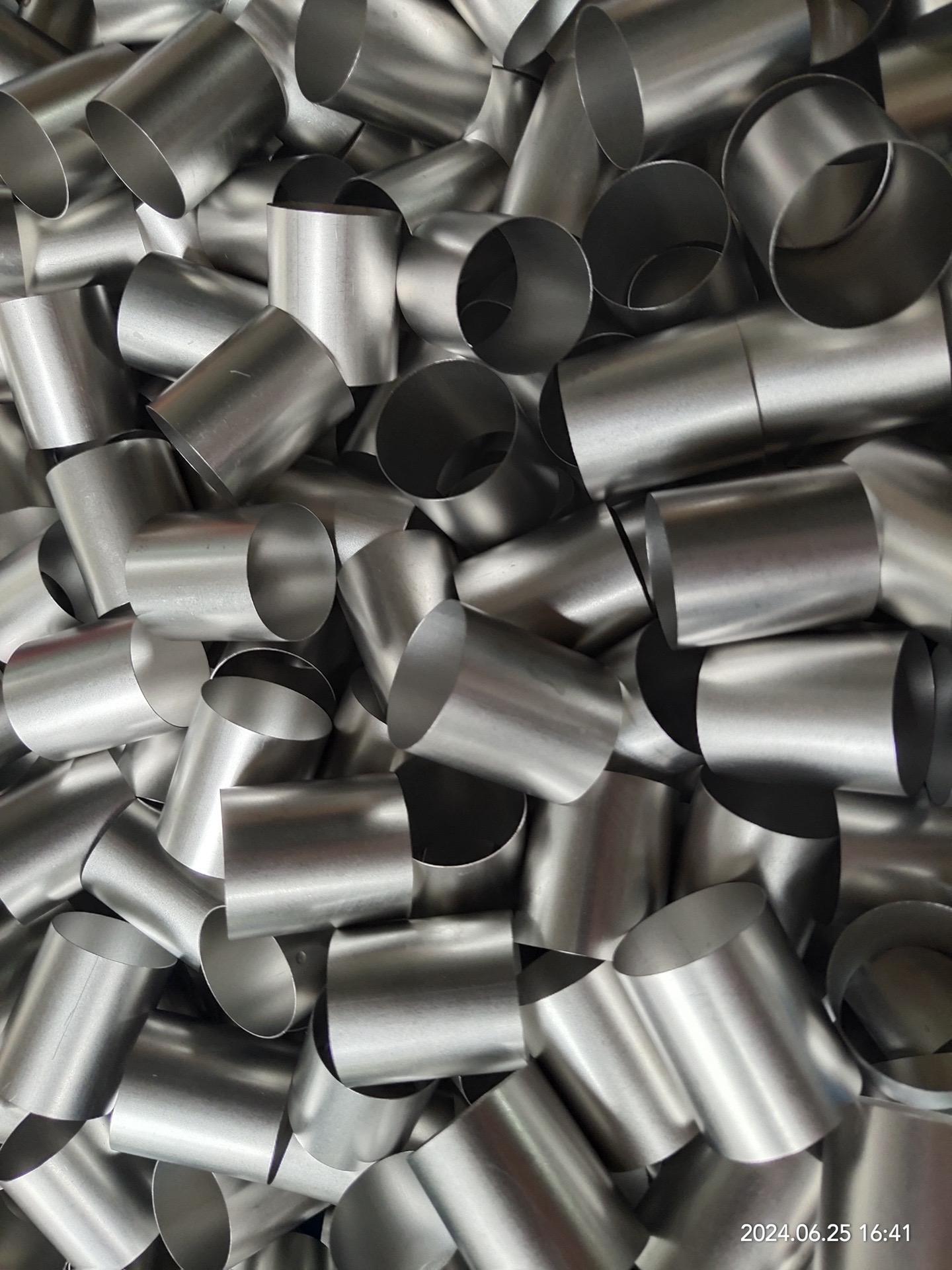
- 1.0Melting Point Range of Stainless Steel
- 2.0Melting Point Differences Between 304 and 316 Stainless Steel
- 3.0Key Factors Affecting the Melting Point of Stainless Steel
- 4.0Why Doesn’t Stainless Steel Have a Fixed Melting Point?
- 5.0Why Is It Important to Know the Melting Point of Stainless Steel?
- 6.0High-Temperature Performance and Creep Strength
- 7.0Considerations in Manufacturing and Welding
- 8.0FAQ: Melting Point of Stainless Steel
1.0Melting Point Range of Stainless Steel
Austenitic Stainless Steels (e.g., 304, 316): These have slightly lower melting points but offer excellent ductility and corrosion resistance.
- Ferritic Stainless Steels: Characterized by higher melting points, they exhibit outstanding oxidation resistance and stress corrosion resistance.
- Martensitic Stainless Steels:With high melting points and strong hardness, they are ideal for high-strength, wear-resistant applications such as cutting tools and automotive parts.
The melting point of stainless steel varies depending on its composition, but most grades fall within the range of 1400°C – 1530°C (approximately 2550°F – 2790°F).
Tip: Despite their high melting points, actual working temperatures are much lower. For example, Type 304 is recommended for use in air up to 870°C (1598°F), while Type 310 can withstand up to 1050°C (1922°F).

1.1Table of melting temp of stainless steel grades
| Types Of Stainless Steel | Melting Point |
| 254SMO | 1325-1400℃ |
| 440C | 1370-1480℃ |
| 316,316L | 1375-1400℃ |
| 2205 | 1385-1445℃ |
| 301 | 1400-1420℃ |
| 330321347 | 1400-1425℃ |
| 17-4PH | 1400-1440℃ |
| 304,304L,310 | 1400-1450℃ |
| 430446 | 1425-1510℃ |
| 420 | 1450-1510℃ |
| 409410416 | 1480-1530℃ |


2.0Melting Point Differences Between 304 and 316 Stainless Steel
304 and 316 are the most common austenitic stainless steels, both featuring a face-centered cubic (FCC) crystal structure that remains stable from the solidification point to the melting point.
- 304 stainless steel melting range: approximately 1400–1450°C (2552–2642°F)
- 316 stainless steel melting range: approximately 1375–1400°C (2507–2552°F)
The difference in melting points is mainly due to their chemical composition—316 contains a higher percentage of nickel and added molybdenum, which slightly lowers its melting point.
3.0Key Factors Affecting the Melting Point of Stainless Steel
3.1Effect of Alloying Elements
Stainless steel is primarily composed of iron, chromium, and nickel. Chromium increases corrosion resistance and raises the melting point; nickel enhances toughness but lowers the melting point; carbon increases hardness, and higher carbon content generally correlates with a higher melting point.
Melting points of key alloying elements:
- Iron (Fe): 1535°C
- Chromium (Cr): 1890°C
- Nickel (Ni): 1453°C
The combination of these elements improves oxidation resistance and high-temperature strength. However, certain combinations can cause a melting point depression, meaning stainless steel, despite containing high-melting-point elements, doesn’t always have a higher overall melting point than regular steel—it depends on the alloy ratio.
3.2Crystal Structure
The crystal structure of stainless steel also impacts its melting point.
- Austenitic (FCC): good ductility, relatively lower melting point
- Ferritic (BCC): higher melting point
- Martensitic: formed through heat treatment, complex structure, melting point influenced by processing methods
3.3External Conditions:
- Pressure: higher pressure increases melting point
- Atmosphere: gases such as oxygen and sulfur can affect material behavior at high temperatures
- Impurities: higher levels of impurities (e.g., sulfur, phosphorus) reduce the melting point
3.4Effects of Heat Treatment on Melting Point and Performance:
While heat treatment does not significantly change the melting point, it alters material structure and performance.
- Annealing: improves ductility, reduces residual stress
- Quenching: increases strength, enhances thermal shock resistance
- Stress Relief: improves material stability, reduces deformation risk
4.0Why Doesn’t Stainless Steel Have a Fixed Melting Point?
Stainless steel is an alloy composed of iron, chromium, nickel, molybdenum, and other elements, each with a different melting point. Unlike pure metals that melt at a single temperature, stainless steel melts over a temperature range as it gradually transitions from solid to liquid.
This melting range is defined by two key terms:
- Solidus Temperature: the temperature at which melting begins
- Liquidus Temperature: the temperature at which the material is fully molten
5.0Why Is It Important to Know the Melting Point of Stainless Steel?
When using metals in high-temperature environments, understanding their melting point is critical. Choosing a material with too low a melting point can lead to deformation, failure, or catastrophic accidents. Therefore:
Design engineers must ensure the material can withstand the highest operating temperatures
Processes such as welding and heat treatment must consider the melting range to ensure safe and consistent quality
Melting and Processing:
The melting range is crucial for steel manufacturers: controlling melting and casting within the proper temperature window; determining suitable processing methods (rolling, forging, etc.). While the melting point may not directly impact end users like designers or engineers, it indirectly affects manufacturability and heat treatment characteristics.
6.0High-Temperature Performance and Creep Strength
Even below the melting point, high temperatures can cause: reduced tensile strength (e.g., 100% strength at 870°C may drop to 50% at 1000°C); structural deformation leading to reduced load-bearing capacity and bending; increased oxidation, damaging the protective oxide film and raising corrosion risk; thermal expansion, loosening welds and compromising structural integrity.
Oxidation and Sulfidation Resistance:
Chromium enhances oxidation resistance in stainless steel; alloys with high nickel content may lose oxidation resistance at elevated temperatures; melting point indirectly affects corrosion resistance in extreme environments.
7.0Considerations in Manufacturing and Welding
The melting point determines the suitability of stainless steel for casting, welding, and other thermal processing methods.
- 304 stainless steel: higher melting point and good heat retention, suitable for medium to high-temperature environments
- 316 stainless steel: better ductility and superior corrosion resistance, ideal for marine or chemical environments
The following list incorporates various common metals and their corresponding melting points.
| Metal | Melting Point |
| Carbon Steel | 1425-1540°C (2597-2800°F) |
| Stainless Steel | 1375 – 1530°C (2500-2785°F) |
| Aluminum | 660°C (1220°F) |
| Copper | 1084°C (1983°F) |
| Brass | 930°C (1710°F) |
| Inconel | 1390-1425°C (2540-2600°F) |
| Nickel | 1453°C (2647°F) |
| Molybdenum | 2620°C (4748°F) |
| Silver | 961°C (1762°F) |
| Titanium | 1670°C (3038°F) |
| Tungsten | 3400°C (6152°F) |
| Zinc | 420°C (787°F) |
8.0FAQ: Melting Point of Stainless Steel
What is the melting point of stainless steel?
The melting point of stainless steel varies depending on its composition and grade. Most stainless steels melt within the range of 1375°C to 1530°C (2500°F to 2785°F).
What is the melting point of 304 stainless steel?
Type 304 stainless steel has a melting range of approximately 1400°C to 1450°C (2552°F to 2642°F).
What is the melting point of stainless steel in Fahrenheit?
The melting point of stainless steel typically ranges from 2500°F to 2785°F, depending on the alloy.
What is the melting point of 18/8 stainless steel?
18/8 stainless steel (which refers to 304 stainless steel, containing approximately 18% chromium and 8% nickel) has a melting range of 1400°C to 1450°C (2552°F to 2642°F).
What is the melting point of 316 stainless steel?
Type 316 stainless steel melts at a slightly lower range than 304, approximately 1375°C to 1400°C (2507°F to 2552°F), due to its higher nickel and molybdenum content.
What is the melting point of stainless steel weld rod?
The melting point of a stainless steel weld rod depends on its material type (e.g., 308, 309, 316L). Generally, it falls within the range of 1375°C to 1500°C (2500°F to 2732°F), depending on the alloy used in the rod. For example, a 316L welding rod typically melts around 1370°C to 1400°C.


